danbricklin.com/log
|
||
|
|
Starting November 19, 2001
Visit to New York City, Ed Yourdon's talk at Boston SPIN, 802.11b and other changes at school, Behind the scenes at the Boston Museum of Science, David Weinberger blogs again after two years
19Nov01-03Dec01
2001_11_19.htm
|
|
Monday, December 3, 2001
Visit to New York City
I was in New York City this past weekend to attend a wedding. I took some pictures during my sightseeing. You can see them and read how I felt in my report "Visit to New York City, December 1, 2001".
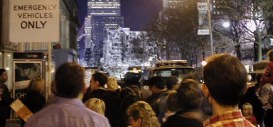  Looking at Ground Zero in New York City, display in Macy's window
Tuesday, November 27, 2001
Ed Yourdon's talk at Boston SPIN
Last week I attended a talk by Ed Yourdon sponsored by the Boston Software Process Improvement Network (Boston SPIN). The topic was "Extreme Project Management", and it was well attended.
For years the name Yourdon has been synonymous with structured and object-oriented software analysis and design. You always hear his name associated with huge projects. I thought it would be fun to hear him talk a bit about the less orchestrated work many of us need to do.
He used a Powerpoint technique that he said was new for him. Using a Mind Map style of layout, he showed one slide that represented his entire talk. He then put up a blank screen and proceeded to build his talk step by step, always with the entire talk so far visible. Some of the words and pictures had live links to provide sound (e.g., a two-second clip from Crosby, Stills, and Nash's Teach Your Children). At the end, he had the diagram build itself again step by step over a couple of minute period while music played to summarize the talk. It was an interesting technique that used his medium (output from an Apple laptop) well. The Powerpoint file he emailed to people who requested it included a more traditional outline of his talk. (The single words of the one slide are cool, but many sentences to go with them help a lot when trying to repeat it a week later.)
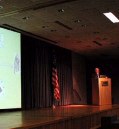  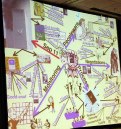  Ed Yourdon on stage at Mitre, the screen near the beginning of the talk and at the end
While the whole talk was interesting, I'll just mention a few things here. (He has an overview on his web site in the Seminars section, listed as "Extreme Project Management".)
When rushing under pressure, don't forget to follow at least the most important "Best Practices", like Peer Review and Metric-Based Scheduling and Management. Just as important, though, are "Worst Practices" -- these are things to make sure you don't do in any case. Examples are: "Don't conduct critical system engineering tasks without sufficient software engineering expertise" and "Don't expect to recover from a schedule slip of >10% without acknowledging a disproportionately greater reduction in software functionality to be delivered." He talked about quick tests to see how things are doing. He called them the "Breathalyzer Test". Examples: "Do you know what software you are responsible for delivering?" and "Can you list the top ten project risks?" He's also a very strong proponent of the Daily Build.
He mentioned several books, including Michael Hammer's new one, "The Agenda" (especially later in the book where Michael discusses how to deal with the unpredictable), Charles Perrow's "Normal Accidents" ("Watch for 'near-misses' and avoid common temptation to say, 'Whew!'" and ignore it, such as when a small plane crashed into the White House a while back..), Fred Brooks' "Mythical Man-Month" (the tradeoffs between schedule, budget, functionality, staff, and quality are not linear), and his own "Death March" book (we'll still be told to do projects under conditions we shouldn't).
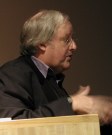  Ed Yourdon explaining something after the talk, and posing for my camera
Speaking with him afterwards, he explained some things about Y2K work. First, there have been lots of Y2K mess ups, with equipment failing. People just are afraid to admit it. There seem to be an awful lot of "Acts of God" failures reported, he says. Second, Y2K preparation saved lots of lives and money on September 11th. All sorts of companies planned for widespread failure of critical systems, both inside and outside of their control -- power going down, communications systems failing, massive loss of data, etc. After disaster struck, they took these plans down from the shelf, dusted them off, and put them to work. Airlines knew how do deal with planes grounded in strange locations around the world, financial service firms knew where to get backup, etc. All planning for the problems that didn't happen around 1/1/00. Interesting.
Wednesday, November 21, 2001
802.11b and other changes at school
I was at Harvard Business School yesterday giving one of my periodic talks to a class on product development. I noticed some changes. There was a new building between the parking lot and Aldrich, the classroom building. As I walked through the new (January 2001) Spangler Center early in the morning before classes, I noticed that just about everybody had their laptops open, even those sitting in study groups. The entire lounge area is served by 802.11b. I'm told they're debating whether or not to allow 802.11b into the classrooms. Quite a change from my day (22 years ago) when all we had were simple calculators and many students paid others to type papers for them. You could see that the regular laptop is an awkward form factor for many of these meetings. Here we have a whole generation ready for tablet PC's... Another change: The professor's overhead slides (yes, they still use them) and handouts are now done with color printers.
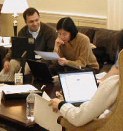  A few of the students in the Spangler Center lounge huddled around their laptops with 802.11b
I looked in on my old classroom. (You spend the first year at HBS in one classroom and the professors come to you.) What a change: From pencils and calculators to laptops. It reminds you that product developers can change the world they come from. There's a plaque in the room commemorating VisiCalc. (Someone once joked to me that people touch the plaque before tests for good luck.) There should be many such plaques around the world celebrating other inspirations and thereby encouraging more people to try to make their own contributions.
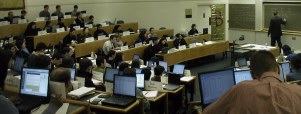 The view from the back of Aldrich 108 (the classroom where I came up with some of the ideas for VisiCalc)
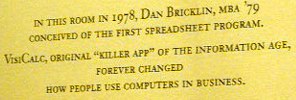 Citation on a plaque put in Aldrich 108 on the 20th anniversary of the announcement of VisiCalc (visible on the far wall in the picture above)
Monday, November 19, 2001
Behind the scenes at the Boston Museum of Science
Early this morning I attended the yearly orientation meeting for the Boards of Trustees and of Overseers of the Boston Museum of Science (I'm an Overseer). As part of the meeting, we got to take a behind the scenes tour. I chose to see how the exhibits are made. Here are some pictures:
 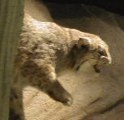   Museum President and Director David Ellis opening the meeting, the old stuffed animals being reused in innovative ways in new exhibits, and the door we were allowed to enter
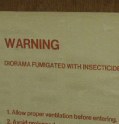 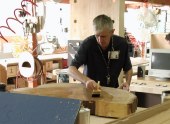  A sticker on the back of an exhibit with stuffed animals warning of insecticide, a worker crafting a new exhibit, some of the parts made by a modeler
In the old days, they were just worried about building exhibits that didn't break. Now they want to make sure that the interactions really work so that people "get" what's going on and learn. New exhibits are prototyped and repeatedly usability tested, just like software applications. We saw prototypes of some computer exhibits using material they got from The Computer Museum.
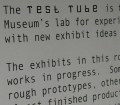 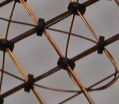 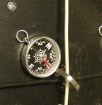 In the "Test Tube" lab we saw some old core memory and an exhibit to show how it worked using crossed wires and compasses. They also had a big transparent trackball that showed how a mouse works and a few other exhibits.
David Weinberger blogs again after two years
I received the following email from David Weinberger, one of the authors of The Cluetrain Manifesto, and author of a monthly email (JOHO -- it's quite long, but fun and interesting to read).
Knowing your interest in the history of the computer era, I thought I should let you know that I think I am the owner of the record for the longest time between weblog entries; I started up a blog at blogger.com on Nov 20 '99 and only dove back in a couple of days ago. Do I at least get a footnote? :)
BTW, I saw your writeup of Paul Simpson. I didn't know he'd left Trellix, but I sure agree with what you write about him. What a great guy and support person.
David's renewed blog is www.hyperorg.com/blogger.
|
||
|
© Copyright 1999-2018 by Daniel Bricklin
All Rights Reserved.
|
||